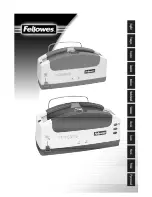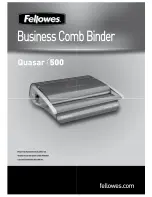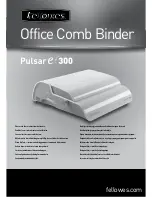
10
08/10 © Hagan Ski GesmbH, Andiesen 11, 4774 St.Marienkirchen, Austria / Art. Nr. TU055-H
ENGLISH
Skier type :
• High speeds, difficult slopes
• Skis aggressively and fast
• Prefers steep terrain
• Uses a Z-setting, which is above nor-
mal level. As a consequence the risk of
both, unintended releases and releases
in crashes, is less.
. Adjustment of the release values
• Find the skiers code according to chart
1. Find out the skiers weight in column
1, the skiers height in column 2. If these
are not found in the same line, use the
code of the line above.
• This code refers to skier type 1.
- For a skier type 2, go one line down
- For a skier type 3, go two lines down
• For a skier being older than 50 years,
again go one line up
• After defining the skiers code, go find
the column in chart 2 which refers to
the sole length (in mm)
• The interface between the column for
the sole length and the line for the
skier’s code specifies the adjustment
value.
• Adjust front- and toe piece accordingly
• Caution, if the interface of the right line
and the column is a blank box, take the
value of the next box in the same line.
• If the binding has proofed unintended
releases the retailer is allowed to adjust
at the behest of the skier:
• First raise the front release value at
the heel piece. Then, but only in case
of still occurring unintended releases,
raise the value for torsional releases at
the toe piece. These settings have to be
carried out progressively by raising the
value in half steps.
. Measuring of the release torque
with a testing device
If mounting, adjustment and functional test
were carried out properly, the binding has
to be double-checked with a calibrated,
according to DIN/ISO 11110, measuring
device for ski bindings.
Important! Mind the specifications of the
measuring device manufacturer.
This examination should assess and con-
firm with a print out, that the adjusted
nominal values for the release (indicated in
Nm) are within the predefined tolerances.
Release value tolerance
According to DIN/ISO 11088 a release
value tolerance of +/- 15% is permitted,
corresponding with a chart value between
one line above and one line below the
nominal release value (My, Mz in the col-
umns of the adjusting chart). If the meas-
ured value is lying within these tolerances,
the system can be cleared.
Important!
After a correct adjustment of the binding
it is necessary to hand out both the func-
tional unit and an inspection document
(printed or handwritten) to the client.
. Fault diagnostic process
Carry out the following test after a correct
adjustment of the side release and the
heel piece: Check whether ski binding,
ski and ski boot are conforming to criteria
of visual examination. Important: All used
binding have to be cleaned before exami-
nation. Do not grease sole holder or glide
AFC!
Side release function test:
Review of lateral resilience and reset
(symmetry):
Clamp the ski tightly and hit the front part
of the ski boot sideways with the palm of
your hand. Die toe cap of the boot should
deflect around 10mm and has to be back
in its initial center position as quick as
frictionless.
If the system has a default:
A
Slow and not exact reset to the center:
• Check whether the ski boot conforms
to DIN/ISO standards or is extensively
worn. If needed, replace it.
• Check the height adjustment of the toe
sole holder and correct if necessary.
• Toe cap of the boot is not precisely
centered in the toe sole holder: check
the forward pressure and correct if
necessary
B
Non-symmetric release:
• It can occur that the release does not
work symmetrically. If the release values
to the right or to the left happen to be
out of the tolerances, this can be due to
an adjustment failure or due to a non-
fitting boot. Check the following:
• Ski boot:
Does it conform to DIN/ISO standards?
- No excessive wear, damage of the
rims and the sole
- No differing radii at the hold points
• Height adjustment of the toe piece:
Adjustment according to 3.10
• Forward pressure:
Adjustment according to 3.8
C
Screws at the front piece or the lock
mechanism/climbing aid are loose:
• Check whether screws are missing,
over wound or loose. If necessary
repair or replace or maybe glue it in.
If everything is ok, repeat the release
check. If it still does not function properly,
we recommend consulting the manufac-
turer.
Care and maintenance
The warranted guarantee by hagan pre-
sumes that the owner’s manual as well as
the warning notices have been followed
and taken care of. Make sure to get the
binding checked according to its function
and correct adjustment regularly or at least
before starting a new ski season. Always
store your skis with the binding locked in
a dry and cool, but frost-protected place.
If the binding is heavily contaminated, only
refine it with water.
Caution: Only use hagan approved lubri-
cants. Otherwise friction values could alter,
leading to unintended releases.
In case of questions or dubiety we are
glad to help anyway.
Tested and approved according to the
DIN/ISO 13992 (Tour) and DIN/ISO 9462
(Alpine) by TÜV-Süd-Product Service
GmbH, Munich.
Made in Germany
All operating and mounting instructions
are available as a PDF database at www.
hagan-ski.com
Hagan Ski GesmbH,
Andiesen11,
77 St.Marienkirchen, Austria,
+ 7711 1-0
Artikel Nr. TU0553 / 06.2010
























